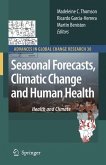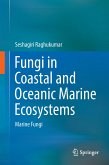This volume covers the causes and consequences of coral bleaching in various geographical regions. The analysis spans from individual colonies to larger ecosystems and also discusses how it can be detected and quantified. Future scenarios are probed.
One of the most dire consequences of global climate change for coral reefs is the increased frequency and severity of mass coral bleaching events. This volume provides information on the causes and consequences of coral bleaching for coral reef ecosystems, from the level of individual colonies to ecosystems and at different spatial scales, as well as a detailed analysis of how it can be detected and quantified. Future scenarios based on modelling efforts and the potential mechanisms of acclimatisation and adaptation are reviewed. The much more severe coral bleaching events experienced on Caribbean coral reefs (compared with those of the Indo-Pacific) are discussed, as are the differences in bleaching susceptibility and recovery that have been observed on smaller geographic scales.
One of the most dire consequences of global climate change for coral reefs is the increased frequency and severity of mass coral bleaching events. This volume provides information on the causes and consequences of coral bleaching for coral reef ecosystems, from the level of individual colonies to ecosystems and at different spatial scales, as well as a detailed analysis of how it can be detected and quantified. Future scenarios based on modelling efforts and the potential mechanisms of acclimatisation and adaptation are reviewed. The much more severe coral bleaching events experienced on Caribbean coral reefs (compared with those of the Indo-Pacific) are discussed, as are the differences in bleaching susceptibility and recovery that have been observed on smaller geographic scales.
From the reviews:
"The book Coral bleaching: patterns, processes, causes and consequences, edited by Madeleine van Oppen and Janice Lough of the Australian Institute of Marine Sciences, is ... a timely contribution to the coral bleaching literature. ... Overall, the book is a useful addition to the library of reef ecology researchers and students. It is a small, handy, and inexpensive volume which makes it accessible to a relatively large audience. The editors provide excellent introductory and concluding chapters that summarize the work well ... ." (Kenneth R. N. Anthony, Ecology, Vol. 90 (9), September, 2009)
"The book Coral bleaching: patterns, processes, causes and consequences, edited by Madeleine van Oppen and Janice Lough of the Australian Institute of Marine Sciences, is ... a timely contribution to the coral bleaching literature. ... Overall, the book is a useful addition to the library of reef ecology researchers and students. It is a small, handy, and inexpensive volume which makes it accessible to a relatively large audience. The editors provide excellent introductory and concluding chapters that summarize the work well ... ." (Kenneth R. N. Anthony, Ecology, Vol. 90 (9), September, 2009)








